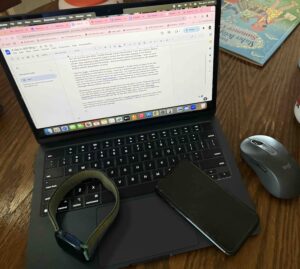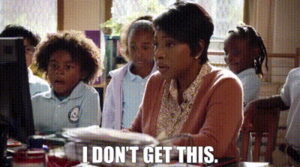
My wrist is vibrating, vibrating, vibrating…my sleepy eyes lock in on the face of my smart watch, and I tap to end the vibrations. Sometimes I get up, sometimes I snooze. When I get up, I run through my morning routine and head to school. Over the past year, I decided to avoid looking at my smartphone until 8:30 am on work days. If I walk to school (500 m), I might check my phone for messages, depending on what I am expecting, both personal and professional.
As I set up in the gym office, I fumble through 2-step authentication. If you are unaware, there is a group of penguins in Antarctica trying to access the information housed on the Horizon servers, thus requiring 2-step authentication and frequent password changes. I open my work email, smile because as the PE teacher. I am of low importance, and the gym is not needed for another random presentation or event.
I log into Chalk, a planning service known as Planboard. I double-check my plans for the day. Once everything is confirmed in my brain, I open up a shared Google Doc and input what activity will be in the gym during my lunch supervision. As I wait for my first period, I usually start watching YouTube for different sports and games ideas. If I am teaching classes from grade 7 and up, I will have to access MySchoolSask to input attendance or enter marks if needed. The rest of the day will be spent checking sporadic emails on my phone or receiving a few random messages through different services…
Messaging and communicating go through (too) many services in my life. Professionally, email is the number one form, but I get the odd text message if it is deemed more urgent. Apparently, in the 90s and earlier, no such urgency existed. Personally, I use text, email, WhatsApp, Facebook (Messenger) and TeamLinkt. Depending on what sport, club or event is happening. These modes of communication can run my day after work and on weekends.
As a classroom teacher, I would typically rely on Google Classroom as a means to support online work and serve as the online meeting point for my students. I still use it for my Wellness 10 class and PE 7-9, but very sparingly. The majority of communication with students is face-to-face, while my communication with parents is via e-mail, unless very pressing (like an injury), it would then be a phone call.
Overall, I am a passive user of social media. I skim through Reddit and Facebook, and if I am connecting with friends and family, it is done by text message.

Oh yeah, I guess I should make a note of AI. In my personal life, I have not actively engaged in the usage of AI, but I am aware that it is lurking in the background. As a teacher and grad student, I have dabbled in services like ChatGPT and Gemini. I use Grammarly to support writing conventions and have used TeachMateAI to help create plans and comments for email, but not very often. At this time, AI isn’t a big part of my daily Tech life…at least that I am aware.






